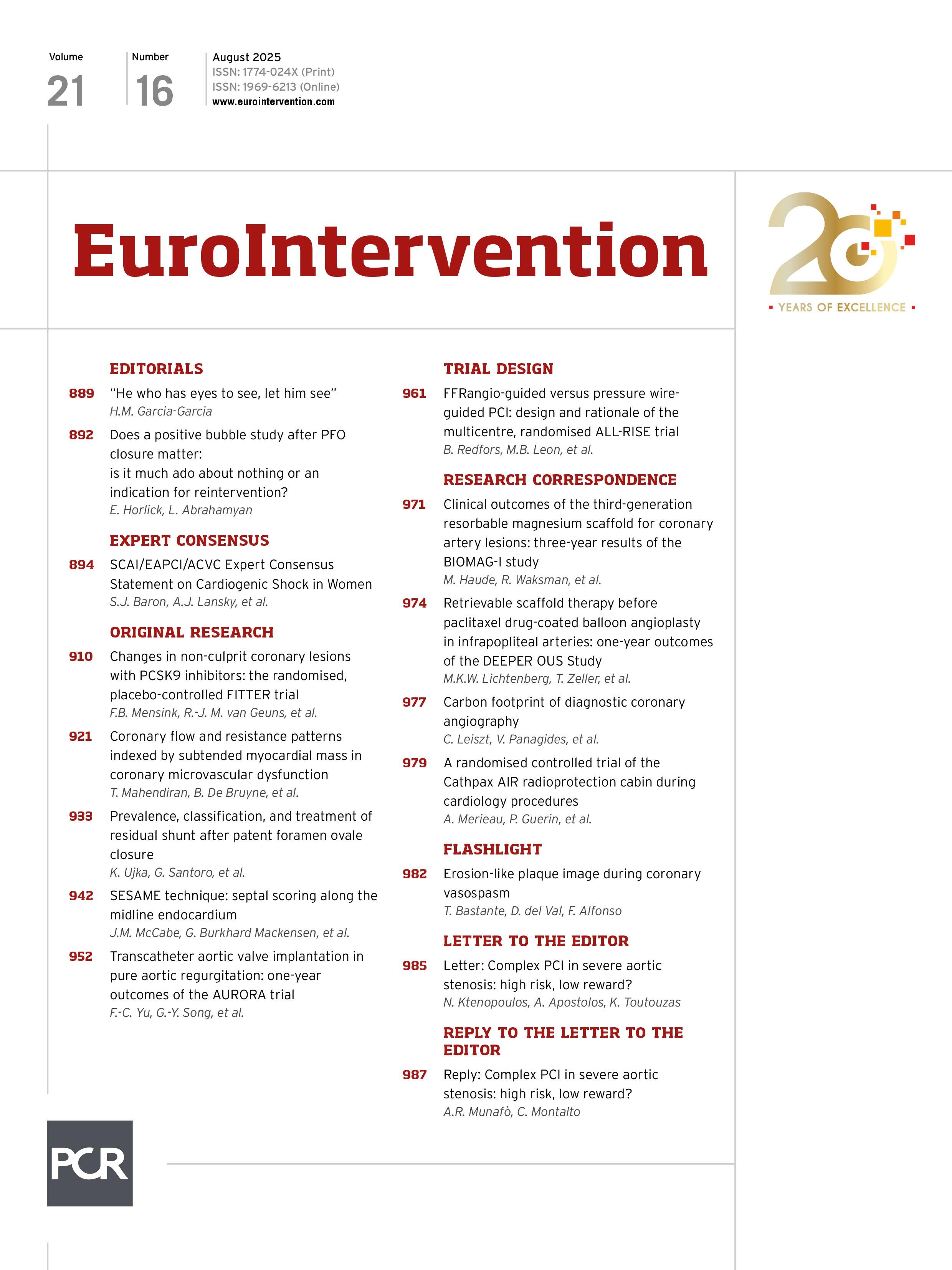Abstract
Background: Residual shunt (RS) after transcatheter patent foramen ovale (PFO) closure has been associated with an increased risk of recurrent stroke over long-term follow-up. However, RS prevalence, anatomical characteristics, and treatment strategies are poorly understood.
Aims: This study aimed to assess the prevalence and causes of RS, as well as to evaluate the safety and feasibility of its percutaneous treatment.
Methods: Patients with RS at transcranial Doppler after transcatheter PFO closure in three Italian high-volume centres between 2000 and 2022 were included. The prevalence and anatomical characteristics of RS, its relationship with the original occluding device, and the procedural details of percutaneous treatment were assessed.
Results: Among the 2,362 patients who underwent PFO closure, any grade and significant RS were diagnosed in 8.8% and 3.6% of patients, respectively. It was more frequently found after use of the NobleStitch system than after double-disc device implantation (20.0% vs 8.5%; p<0.00001). Among double-disc device implantations, a higher rate of shunt was found with stiffer devices (9.8% vs 7.1%; p<0.05) and with devices larger than 25 mm (13.9% vs 6.6%; p<0.00001). Intradiscal RS (type 1) was most common (43.6%), followed by extradiscal RS (type 2; 35.1%) and RS due to unusual causes (type 3; 14.9%). Percutaneous treatment was successful in 89.4% of patients using different, anatomically tailored devices.
Conclusions: RS is commonly found after transcatheter PFO closure and is significantly associated with the type and size of the occluding device implanted. It results from different mechanisms and can be safely and effectively treated by a percutaneous, patient-tailored approach in a high percentage of cases.
Sign up for free!
Join us for free and access thousands of articles from EuroIntervention, as well as presentations, videos, cases from PCRonline.com

